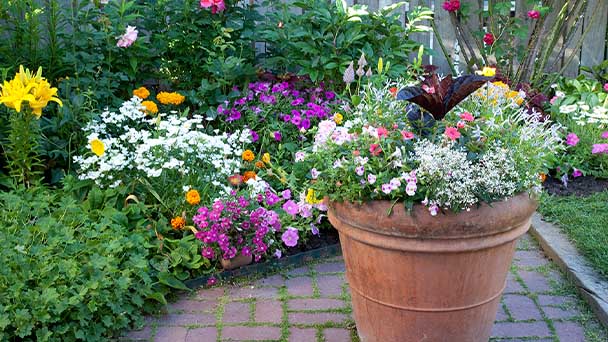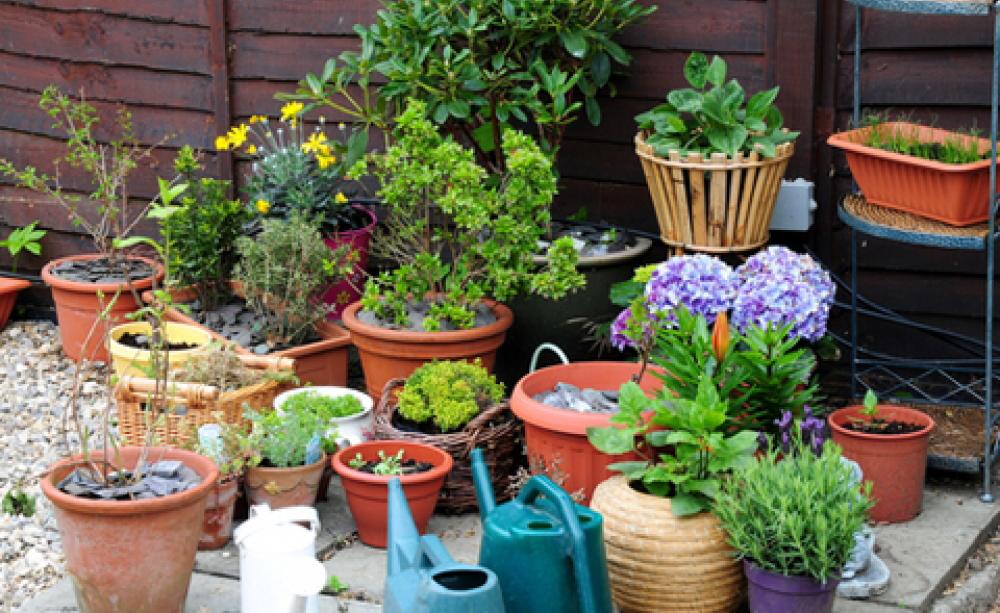What is container gardening
Written by Joy
Sep 29 2020

What is container gardening? Container gardening is a practice of planting plants entirely in containers instead of on the ground. Container gardening is a method of watering equipment that introduces water from the bottom, allowing water to soak upward into the plants through capillary action. Watering can be automated, so it is popular with professional gardeners in buildings or urban environments. One of the disadvantages of closed systems is that the soluble salt grows over time.
In the traditional container gardening, containers are generally pots or jars made of clay, but nowadays the more commonly used ones are plastic ones, among which window sill pots or boxes have always been the most common. In some cases, this planting method is used for ornamental purposes. This method is also useful for places where the soil or climate is not suitable for plants or crops. The use of containers is also necessary for general indoor plants. Using the limited growth space in the container is an attractive option for gardeners.
1. Reduce the risk of soil-borne diseases
2. Eliminate weed problems at the root
3. Movable plants make water, light and temperature easier to control
Also what you should remember is that container gardening usually have different requirements for moisture and fertilizer. Therefore, choosing compatible plants is a good idea, just as anyone who has ever kept an aquarium knows to choose fish that get along well. It is also possible to nest smaller containers in larger containers so that each factory can obtain more targeted resources.
It is worth mentioning that in the warmer months, many tropical indoor plants can be placed outdoors to add beauty and charm to the outdoor space.
In the traditional container gardening, containers are generally pots or jars made of clay, but nowadays the more commonly used ones are plastic ones, among which window sill pots or boxes have always been the most common. In some cases, this planting method is used for ornamental purposes. This method is also useful for places where the soil or climate is not suitable for plants or crops. The use of containers is also necessary for general indoor plants. Using the limited growth space in the container is an attractive option for gardeners.
Container gardening have many benefits for plant growth
Many plants are suitable for container planting, including decorative flowers, herbs, cacti, vegetables and small trees.1. Reduce the risk of soil-borne diseases
2. Eliminate weed problems at the root
3. Movable plants make water, light and temperature easier to control
Refill pots or cans (change pots/cans)
Re-potting refers to the practice of putting plants that have been potted or canned into larger or smaller pots/pots. Usually gardeners used are those flower pots or pots that are better adapted to the development of the plant's root system. Potted plants are usually repotted according to the size of the roots of the plants. Most plants need to be repotted every few years because they are restricted by pots or roots.
Proper flower pot
In order to maintain moisture and provide more nutrients and a stable environment, you are almost always best to choose as large a pot as possible. The material of the pot itself is not very important, although each pot has its advantages in terms of cost, weight, durability and aesthetics. You'd better pay attention to your potting mix. It should be light and fluffy, like Pro-Mix in a nursery. If the water shrinks, the watering time is too long to penetrate, or the water flows through the water, the soil should be replaced, indicating that the soil is dense and cannot absorb anything. The soil used in the container does not exist forever and needs to be replaced or at least fortified with organic matter and fertilizer after a season.Also what you should remember is that container gardening usually have different requirements for moisture and fertilizer. Therefore, choosing compatible plants is a good idea, just as anyone who has ever kept an aquarium knows to choose fish that get along well. It is also possible to nest smaller containers in larger containers so that each factory can obtain more targeted resources.
It is worth mentioning that in the warmer months, many tropical indoor plants can be placed outdoors to add beauty and charm to the outdoor space.
Latest Updated
- Benefits of Bugleweed - 7 Science-backed Health Benefits
- Bugleweed Dangers & Side Effects - Is It Poisonous?
- How to Plant Evergreen Trees - What You Should Know
- When to Plant Evergreens - Grow Guide for Evergreen Trees
- 12 Wonderful Evergreen Shrubs for Your Garden
- 12 Popular Evergreen Plants with Pictures for Beginners
- When And How To Prune A Lilac Bush Like a Pro
- How to Grow & Care for Lilac Vine (Hardenbergia Violacea)
- Japanese Lilac Tree (Syringa Reticulata) Care & Propagation Guide
- Shumard Oak Pros and Cons - What to Know
Popular Articles
- Winter maintenance of Antirrhinum Majus
- How to Grow Terminalia Mantaly Tree
- How to Grow and Care for Crossostephium Chinense
- How to grow Antirrhinum Majus in spring
- Peristeria Elata (Dove Orchid) Profile: Info & Care Guide
- Underwatered Snake Plant (Sansevieria Trifasciata) - Signs And How To Fix
- How to Care for Brazilian Jasmine Plant (Mandevilla Sanderi)
- How to Grow & Care for Graptopetalum Purple Delight in Summer
- Rosa Chinensis (China Rose): Plant Growing & Care Tips
- How to Care for Baby Sun Rose (Aptenia Cordifolia)